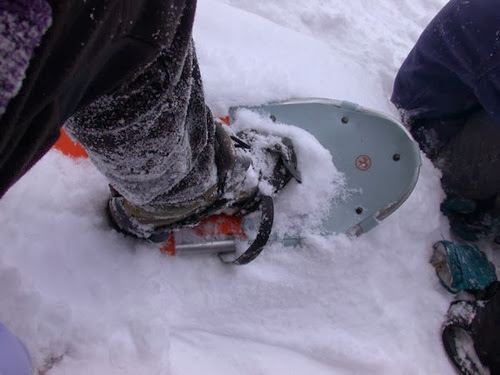Do you need a specific type of footwear for snowshoeing? Yes and no. The reality is that you can strap in virtually any pair of shoes or boots and hit the snowy trails. But to ensure a warm, dry, and enjoyable snowshoe experience, it’s best to don footwear with the following five features.
A Sturdy, Non-compressible Upper
Snowshoe bindings should fit tightly and securely to prevent your footwear from shifting around as you move. Cinching the binding straps tightly helps accomplish this, but it can also exert considerable pressure across the top of your footwear. If the upper portion of your footwear is soft and compressible over the instep or across the front of your feet, this can impede circulation—and result in some unpleasantly chilled toes.
A Stiff Sole
As a general rule, the stiffer the boot, the better. This helps reduce the amount of energy you’ll expend snowshoeing. Why? You won’t waste energy flexing your footwear inside the binding, which can lead to fatigue in your foot muscles, and can instead focus your energy on moving forward.
Waterproof Materials
If your shoes get wet and soak through, your feet are in for a soggy and chilling experience. Footwear with a Gore-Tex lining (or its equivalent) work well, as do winter boots with waterproof rubber around the lower half of the boot.
Warm Insulation
You can wear hiking boots or other non-insulated footwear, but your feet are more likely to get cold as a result. Most winter boots feature a toasty layer of insulation for warmth, a significant plus. If you do wear non-insulated footwear, consider purchasing a pair of neoprene covers to go over the boots to add additional warmth.
Secure Fit
As with any footwear, a good fit is arguably the single-most important feature. Your feet should not move side-to-side nor slip up and down as you snowshoe, which can both rapidly fatigue your feet and lead to painful blisters.
Photo: Flickr Commons; artescienza
